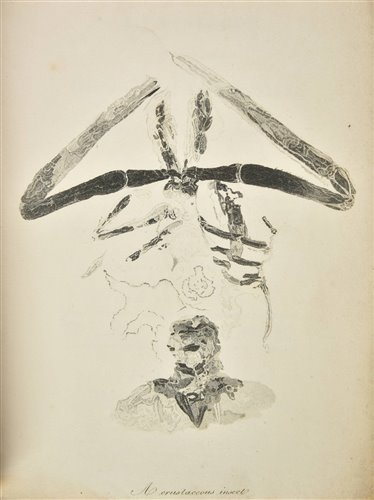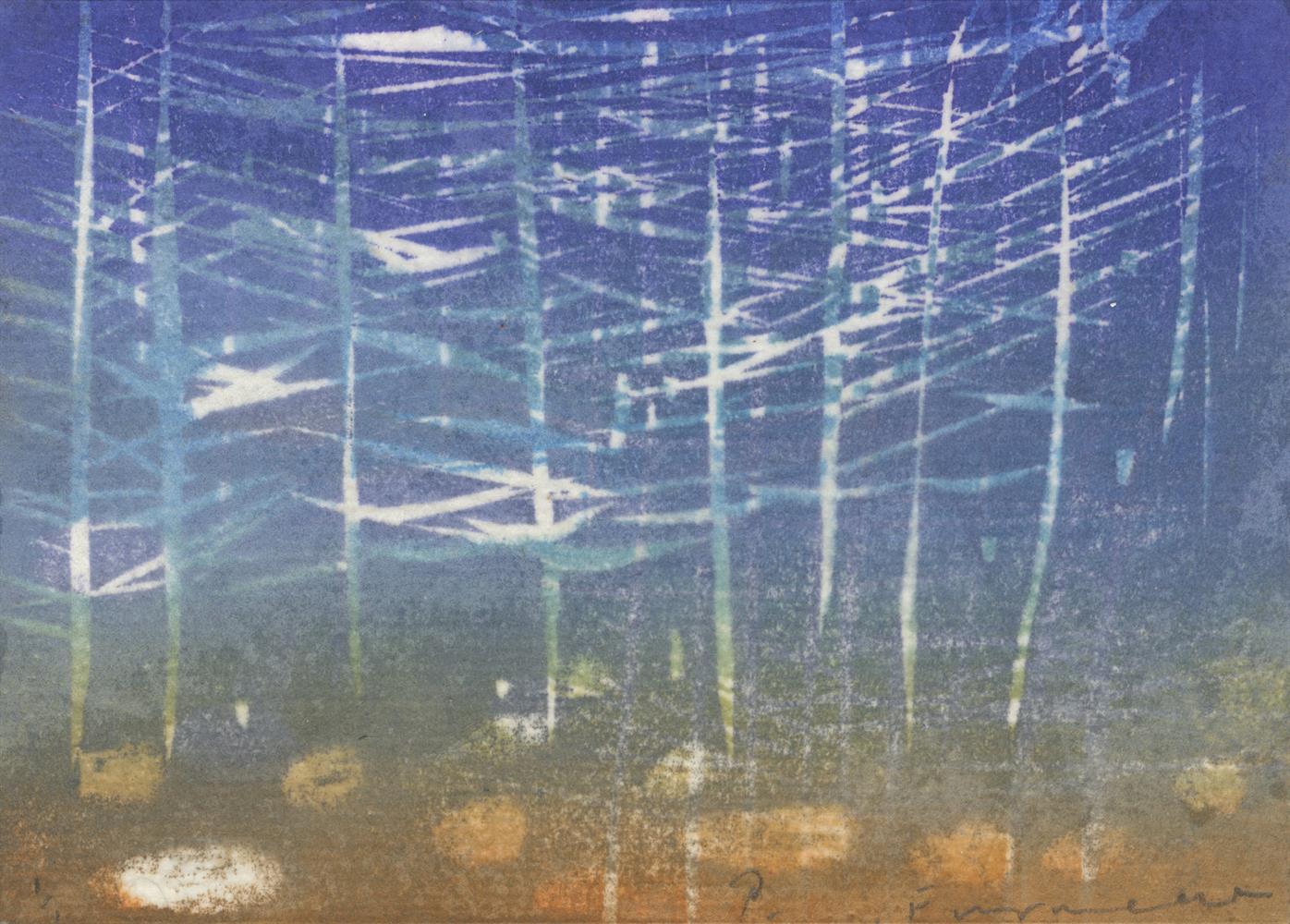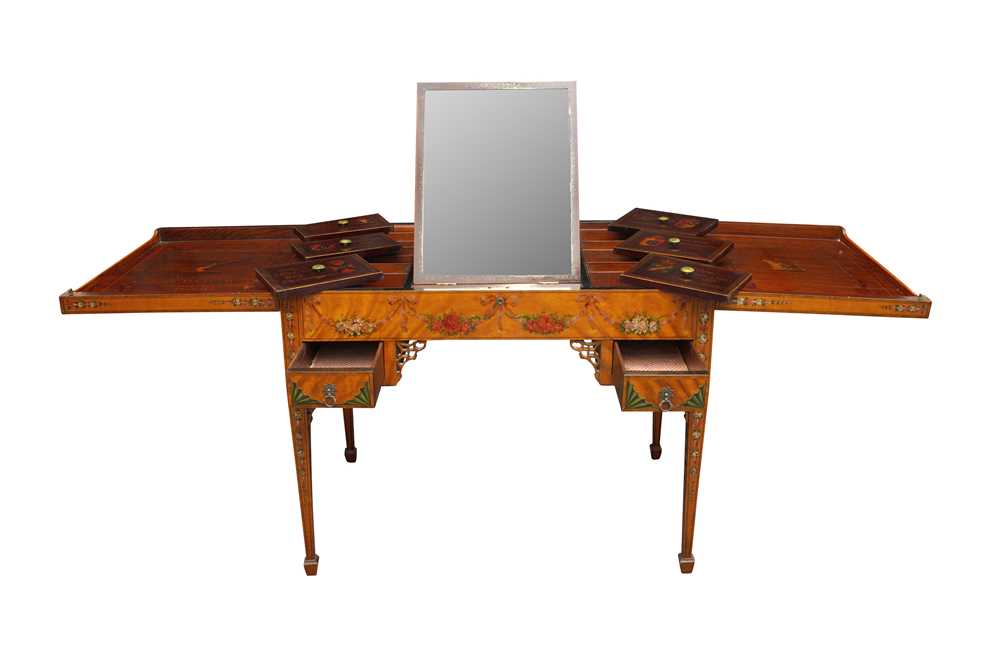Birch, WilliamThe City of Philadelphia in the state of Pennsylvania, North America: as it appeared in the year 1800 consisting of 28 plates drawn and engraved by W. Birch & Son. Springland Cot, Pennsylvania: W. Birch, 1800 Large oblong folio (376 x 461 mm). Engraved title by William Barker with vignette of the arms of Philadelphia, engraved plan of the city by Barker, letterpress leaf of introduction with list of plates, 27 handcolored copper engravings by and after William and Thomas Birch letterpress list of subscribers, extra-illustrated with a variant of High Street Market plate, showing George Washington's funeral procession; right margin of title-page expertly repaired. Bound to style in period half tree calf, marbled paper-covered boards; some wear at joints, boards somewhat rubbed. Morocco gilt clamshell case. The first and one of the most important of all American color plate books. William Russell Birch who conceived this splendid celebration of the city of Philadelphia, then the largest city in the United States, was a native of England. When he arrived in America in 1794 at the age of thirty-nine, he brought with him a strong academic training in art with no less a master than Sir Joshua Reynolds His talent and all his creative skills were put to good use in his adopted city, where he founded an engraving firm. Birch hoped that his carefully planned and executed portfolio would serve as an advertisement "by which the improvements of the country could be conveyed to Europe, to promote and encourage settlers to the establishment of trade and commerce." Birch's idea was to present a series of plates which would illustrate notable buildings and characteristic scenes in his adopted city. From the beginning, he worked assiduously on the project he assigned himself, often rejecting drawings or reworking copper plates when the printed impressions did not satisfy him. For the subject matter, there was no aspect of Philadelphia or of the vitality of its streets that he did not sweep into his embrace: the harbor; the grid plan of the streets; the ships and cargo that came into the port; the elegance of the buildings, public and private; the residents, rich and poor alike; the fashions worn by the fashionable; the ethnic minorities; markets and produce sold in them; varying types of transportation, including coaches, wagons, mounts, and the omnipresent wheelbarrow; a funeral procession; a military drill; a colorful troop of Native Americans visiting the city; lampposts, sentry boxes, fences, gateposts; and everywhere, Philadelphians attending to business, labor, or leisure. It is an ambitious urban portrait, full of affection for a city that the artist adopted as his own at a time when it was at a peak of development and enjoying distinction as a temporary seat of the federal government. The work was published by subscription, with about 150 original subscribers paying the then very large sum of $44.50 for bound and colored copies. The present set contains 27 of the 29 plates in the plate list. The two not present are 15 ("Second-street north from Market-street ….") and 29 ("Swedish Church, Southwark …."). The book is augmented by the addition of the revised version of "High Street, from the Country Market-place," which included the procession in commemoration of the death of George Washington, held on 26 December 1799. "Well-documented studies of Birch's engravings are found in Martin P. Snyder's articles 'William Birch: His Philadelphia Views' and 'Birch's Philadelphia Views: New Discoveries,' as well as in his book, City of Independence. In the latter study, Snyder writes that the Birch set of views 'was so intensive in the planning and so effective in the execution as to make all earlier efforts — no matter how important individually — simply sparks of light in a great void. Birch illuminated. His aim was not to commemorate a single event or to show a single new structure, but to record a city. … He wanted to portray no
Birch, WilliamThe City of Philadelphia in the state of Pennsylvania, North America: as it appeared in the year 1800 consisting of 28 plates drawn and engraved by W. Birch & Son. Springland Cot, Pennsylvania: W. Birch, 1800 Large oblong folio (376 x 461 mm). Engraved title by William Barker with vignette of the arms of Philadelphia, engraved plan of the city by Barker, letterpress leaf of introduction with list of plates, 27 handcolored copper engravings by and after William and Thomas Birch letterpress list of subscribers, extra-illustrated with a variant of High Street Market plate, showing George Washington's funeral procession; right margin of title-page expertly repaired. Bound to style in period half tree calf, marbled paper-covered boards; some wear at joints, boards somewhat rubbed. Morocco gilt clamshell case. The first and one of the most important of all American color plate books. William Russell Birch who conceived this splendid celebration of the city of Philadelphia, then the largest city in the United States, was a native of England. When he arrived in America in 1794 at the age of thirty-nine, he brought with him a strong academic training in art with no less a master than Sir Joshua Reynolds His talent and all his creative skills were put to good use in his adopted city, where he founded an engraving firm. Birch hoped that his carefully planned and executed portfolio would serve as an advertisement "by which the improvements of the country could be conveyed to Europe, to promote and encourage settlers to the establishment of trade and commerce." Birch's idea was to present a series of plates which would illustrate notable buildings and characteristic scenes in his adopted city. From the beginning, he worked assiduously on the project he assigned himself, often rejecting drawings or reworking copper plates when the printed impressions did not satisfy him. For the subject matter, there was no aspect of Philadelphia or of the vitality of its streets that he did not sweep into his embrace: the harbor; the grid plan of the streets; the ships and cargo that came into the port; the elegance of the buildings, public and private; the residents, rich and poor alike; the fashions worn by the fashionable; the ethnic minorities; markets and produce sold in them; varying types of transportation, including coaches, wagons, mounts, and the omnipresent wheelbarrow; a funeral procession; a military drill; a colorful troop of Native Americans visiting the city; lampposts, sentry boxes, fences, gateposts; and everywhere, Philadelphians attending to business, labor, or leisure. It is an ambitious urban portrait, full of affection for a city that the artist adopted as his own at a time when it was at a peak of development and enjoying distinction as a temporary seat of the federal government. The work was published by subscription, with about 150 original subscribers paying the then very large sum of $44.50 for bound and colored copies. The present set contains 27 of the 29 plates in the plate list. The two not present are 15 ("Second-street north from Market-street ….") and 29 ("Swedish Church, Southwark …."). The book is augmented by the addition of the revised version of "High Street, from the Country Market-place," which included the procession in commemoration of the death of George Washington, held on 26 December 1799. "Well-documented studies of Birch's engravings are found in Martin P. Snyder's articles 'William Birch: His Philadelphia Views' and 'Birch's Philadelphia Views: New Discoveries,' as well as in his book, City of Independence. In the latter study, Snyder writes that the Birch set of views 'was so intensive in the planning and so effective in the execution as to make all earlier efforts — no matter how important individually — simply sparks of light in a great void. Birch illuminated. His aim was not to commemorate a single event or to show a single new structure, but to record a city. … He wanted to portray no











.jpg)
Testen Sie LotSearch und seine Premium-Features 7 Tage - ohne Kosten!
Lassen Sie sich automatisch über neue Objekte in kommenden Auktionen benachrichtigen.
Suchauftrag anlegen